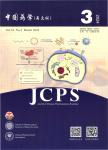Dose optimization of piperacillin/tazobactam in patients with renal dysfunction based on population pharmacokinetic and pharmacodynamic simulations
基于群体药动学和药效学的仿真对肾功能不全病人使用哌拉西林/他唑巴坦进行剂量优化(英文)作者机构:Department of pharmacy Peking University Third Hospital Beijing 100191 China Center for drug evaluation China Food and Drug Administration Beijing 100053 China
出 版 物:《Journal of Chinese Pharmaceutical Sciences》 (中国药学(英文版))
年 卷 期:2018年第27卷第12期
页 面:824-831页
核心收录:
学科分类:1007[医学-药学(可授医学、理学学位)] 10[医学]
基 金:Peking University Third Hospital research funding(Grant No.7476-01)
主 题:Piperacillin/tazobactam Renal dysfunction Dose optimization
摘 要:In the present study, we aimed to investigate the optimal dosage regimens of piperacillin/tazobactam in patients with chronic kidney disease according to their different classes of renal function based on bacterial resistance. A total of 2700 simulationswere applied based on a published population pharmacokinetic and pharmacodynamic model using nonlinear mixed effects modeling (NONMEM) software. Permissible optimal dosage regimens were defined as those associated with a less than 10% of patients whose probabilities of target attainment (PTA) were not attain target. For patients with mild to moderate renal injury, 4/0.5 g of piperacillin/tazobactam every 12 h in 30 min intermittent infusion could attain the target. If the MIC (minimum inhibitory concentration) for the pathogen was 8 mg/L or 16 mg/L, either an 8-h or 6-h dosing interval or extended 2–6 h infusion regimen had to be used to achieve the outcome of the therapy. Regarding MIC was up to above 32 mg/L, a high dose of piperacillin (12–24 g/d) in continuous infusion was the only approach that could achieve the effective target in patients with renal dysfunction. A low dose with extended 4–6 h infusion regimen was recommended for patients with severe renal injury. Our study identified permissible optimal piperacillin/tazobactam dosage regimens for patients with renal dysfunction with an MIC up to 64 mg/L. The findings of this study would be helpful for precise administration of piperacillin/tazobactam in clinical practice.



